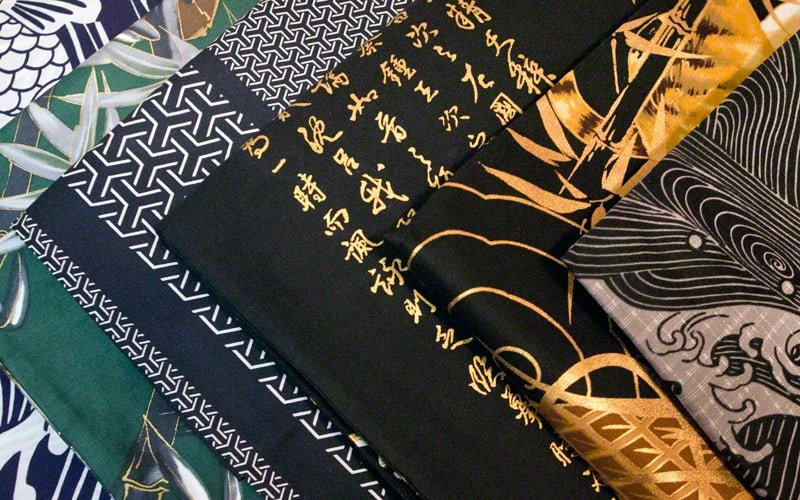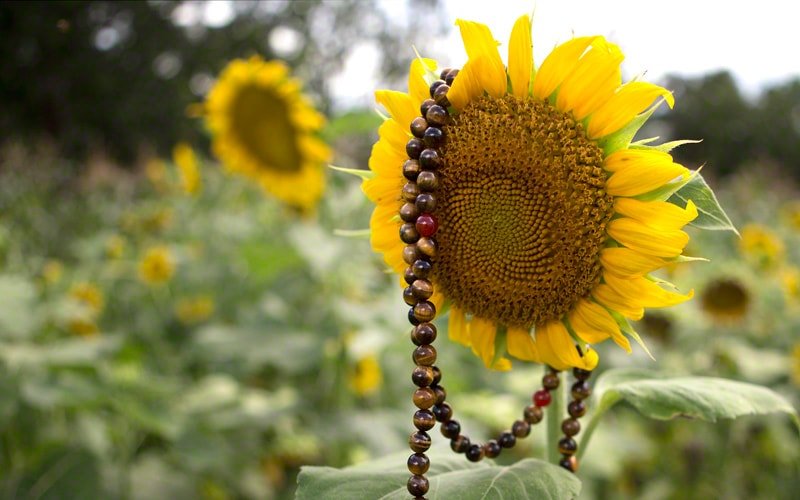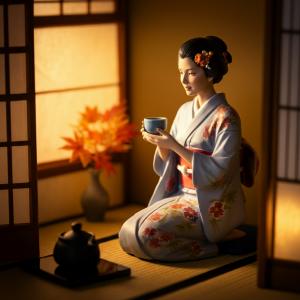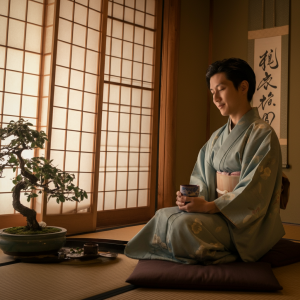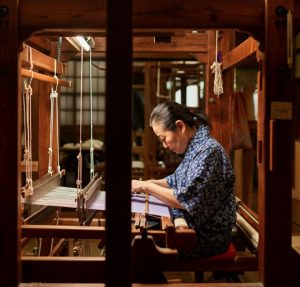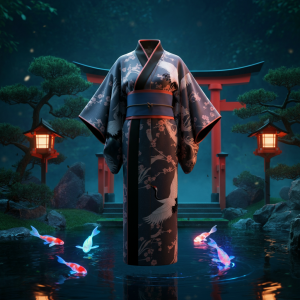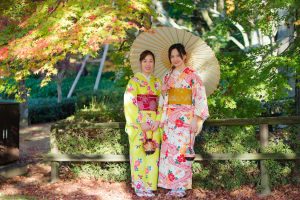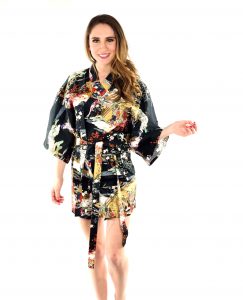The allure of owning an authentic Japanese kimono or yukata draws many to online marketplaces, but the path to finding genuine, quality garments can be fraught with pitfalls. Whether you’re seeking a formal kimono for special occasions or a casual yukata for summer festivals, the digital shopping landscape presents unique challenges that can leave you with disappointing purchases and empty pockets.
Online shopping for traditional Japanese clothing requires more caution than buying everyday items. Unlike mass-produced Western clothing, kimonos and yukatas carry cultural significance, require specific craftsmanship, and follow traditional construction methods that many sellers either don’t understand or deliberately misrepresent. This guide will equip you with the knowledge to navigate these waters safely and secure authentic, quality garments that honor their cultural heritage.
The Hidden Dangers of Online Kimono Shopping
Sight Unseen Shopping Risks
When you buy a kimono online, you’re purchasing based on photographs and descriptions alone. This presents several immediate challenges:
Color distortion affects nearly every online purchase. Monitor settings, lighting conditions during photography, and digital compression all alter how colors appear on your screen. Traditional Japanese dyes can look dramatically different in person, and subtle color variations that define quality often disappear in digital photography.
Texture and fabric weight remain invisible through screens. A genuine silk kimono feels substantially different from synthetic alternatives, but photographs cannot convey the drape, weight, or hand-feel that determine both comfort and authenticity. Many buyers discover too late that their “silk” kimono is actually polyester with a silk-like appearance.
Size and fit complications multiply with traditional Japanese garments. Kimonos follow different sizing conventions than Western clothing, and proper fit depends on your height, sleeve length preferences, and intended styling method. Without trying on the garment, you risk receiving something unwearable.
The Trust Factor Problem
Online kimono shopping requires trusting sellers you’ve never met with potentially significant purchases. This trust becomes problematic when:
Seller expertise varies wildly. Some vendors deeply understand kimono construction, history, and proper care, while others treat these garments like any other fashion item. The difference shows in their product descriptions, pricing, and customer service quality.
Communication barriers emerge frequently. Many authentic Japanese sellers have limited English, while Western sellers may lack knowledge about traditional garment construction. These gaps lead to misunderstandings about condition, size, and authenticity.
Return logistics become complicated with international purchases. Shipping costs, customs procedures, and extended return periods create financial risks that local purchases don’t carry.
Major Marketplace Pitfalls: Why Amazon and Etsy Fall Short
The Amazon Problem
Amazon’s algorithm-driven marketplace creates unique problems for kimono buyers:
Counterfeit products proliferate because Amazon’s seller verification process doesn’t assess cultural authenticity or traditional craftsmanship knowledge. Sellers can list mass-produced costumes alongside genuine vintage pieces, making distinction difficult.
Misleading descriptions run rampant due to automated translation errors and sellers who don’t understand kimono terminology. You might see “authentic vintage silk furisode” describing a modern polyester robe with kimono-style sleeves.
Review manipulation affects many kimono listings. Sellers purchase positive reviews, while genuine negative reviews about quality or authenticity get buried among fake positive ones. The star rating system becomes meaningless for discerning quality.
The Etsy Dilemma
Etsy markets itself as a handmade and vintage marketplace, but kimono sales present specific problems:
Vintage misrepresentation happens frequently when sellers lack knowledge about kimono dating, construction periods, or authenticity markers. Modern reproductions get listed as “vintage,” while genuinely old pieces get described inaccurately.
Handmade confusion emerges when sellers list mass-produced items as handmade, or when they modify genuine vintage pieces without disclosing alterations. Traditional kimono construction methods differ significantly from modern sewing techniques.
Price inconsistencies reflect seller ignorance about kimono values. You might find overpriced synthetic robes next to underpriced genuine silk pieces, but distinguishing between them requires expertise most buyers lack.
Research Strategies for Seller Verification
Investigating Seller Longevity
Check establishment dates across multiple platforms. Reputable kimono dealers typically have years of selling history, not just months. New sellers aren’t automatically problematic, but they require extra scrutiny.
Track business evolution through archived versions of their websites or social media presence. Legitimate dealers show consistent focus on Japanese textiles, while questionable sellers often jump between unrelated product categories.
Verify contact information by calling phone numbers, visiting physical addresses if listed, and confirming business registrations. Serious dealers maintain professional communication channels and transparent business practices.
Assessing Reputation Markers
Professional photography quality often indicates seller seriousness. Detailed, well-lit photographs showing construction details, fabric close-ups, and accurate colors suggest sellers who understand their products’ value.
Product description depth reveals seller expertise. Knowledgeable dealers include information about:
- Fabric composition and weave type
- Historical period or style classification
- Condition details with honest flaw disclosure
- Proper care instructions
- Cultural context and appropriate wearing occasions
Response quality to customer questions demonstrates knowledge level. Test sellers with specific questions about sizing, authenticity markers, or care requirements. Their responses reveal their understanding of traditional Japanese garments.
Quality Authentication Techniques
Fabric and Construction Red Flags
Synthetic material misrepresentation appears in several forms:
- “Silk-like” or “silk blend” often means 100% polyester
- Suspiciously low prices for claimed silk garments
- Overly perfect, unwrinkled appearance in photographs
- Descriptions emphasizing durability over traditional qualities
Construction shortcuts indicate mass production rather than traditional methods:
- Machine-sewn seams instead of hand-sewn construction
- Simplified closure systems replacing traditional obi ties
- Missing or simplified lining in formal kimono
- Non-traditional proportions or measurements
Origin Verification Methods
Made in Japan claims require verification because many sellers falsely advertise origin:
- Request specific information about textile mills or workshops
- Ask for certificates of authenticity when available
- Research brand names or maker marks shown in photographs
- Compare claimed origins with price points and construction quality
Cultural authenticity markers help distinguish genuine pieces from costumes:
- Proper seasonal motif placement and selection
- Traditional color combinations and pattern arrangements
- Authentic obi styles and tying methods
- Appropriate fabric choices for specific kimono types
Review Analysis Best Practices
Reading Between the Lines
Focus on detailed reviews rather than simple star ratings. Helpful reviews discuss:
- Actual fabric quality upon arrival
- Color accuracy compared to photographs
- Sizing accuracy and fit issues
- Seller communication quality
- Return experience if applicable
Identify fake reviews by watching for:
- Generic language that could apply to any product
- Unusual review timing patterns
- Excessive enthusiasm without specific details
- Reviewer profiles with limited history or suspicious patterns
Weight negative experiences heavily since disappointed customers provide crucial warning signs about sizing problems, quality issues, or poor customer service.
Cross-Platform Review Checking
Don’t rely on reviews from a single platform. Check:
- Google Business reviews for physical store locations
- Social media comments and discussions
- Specialized forums where kimono enthusiasts share experiences
- Better Business Bureau ratings for US-based sellers
Return Policy Investigation
Essential Policy Elements
Time limits for returns vary dramatically, but quality dealers typically offer 30+ days for inspection and returns. Be wary of sellers offering only 7-14 days, especially for international shipments.
Condition requirements should be clearly stated. Understand whether you can:
- Try on the garment for fit
- Have it professionally cleaned before returning
- Return items with original tags removed
- Return custom-sized or altered pieces
Cost responsibility for return shipping affects your total risk. Calculate potential return costs before purchasing, especially for international orders where shipping might cost $50-100+.
Hidden Policy Traps
Restocking fees sometimes apply to returns, adding 15-25% to your loss if the item doesn’t work out. Factor these fees into your total cost calculations.
Exchange limitations may prevent you from getting refunds, forcing you to accept store credit or different items instead of your money back.
Inspection periods might be unreasonably short, starting from shipment date rather than delivery date. International shipping delays can consume most of your return window before the package arrives.
Building Long-Term Relationships
Repeat customer benefits with quality dealers include:
- Access to new arrivals before public listing
- Detailed condition reports and additional photographs
- Sizing advice based on previous purchases
- Flexible return policies built on established trust
Educational opportunities emerge through relationships with knowledgeable dealers who can teach you about:
- Proper kimono care and storage methods
- Historical context and cultural significance
- Quality assessment techniques
- Fair pricing for different types and conditions
Making Informed Decisions
Budget Considerations
Authentic quality costs significantly more than costume versions, but the investment pays off in durability, appearance, and cultural authenticity.
Hidden costs include shipping, insurance, customs duties, potential alteration needs, and proper storage supplies. Factor these expenses into your total budget before committing to purchases.
Cost per wear calculations help justify higher initial investments in quality pieces you’ll treasure and use repeatedly versus cheaper alternatives that disappoint or deteriorate quickly.
Building Expertise Over Time
Start with smaller purchases to test seller reliability and learn about quality markers before making major investments. A casual yukata purchase teaches you about a seller’s practices at lower risk than an expensive formal kimono.
Develop relationships with knowledgeable collectors and dealers who can provide ongoing education and purchasing guidance. The kimono community values relationships and sharing knowledge.
Study traditional construction through books, museum collections, and online resources to develop your own quality assessment abilities. Understanding how authentic pieces should look and feel protects you from deceptive sellers.
Your journey toward owning authentic Japanese textiles requires patience, research, and careful selection of sellers who respect these cultural treasures. By avoiding common pitfalls and developing relationships with reputable dealers, you’ll build a collection that honors the artistry and cultural significance of these remarkable garments while enjoying the beauty and craftsmanship they represent.
The extra effort invested in proper research and seller verification pays dividends in authentic, quality pieces that provide years of enjoyment and cultural connection. Take time to learn, ask questions, and choose sellers who demonstrate genuine knowledge and respect for these traditional arts.

Online Kimono Shopping

